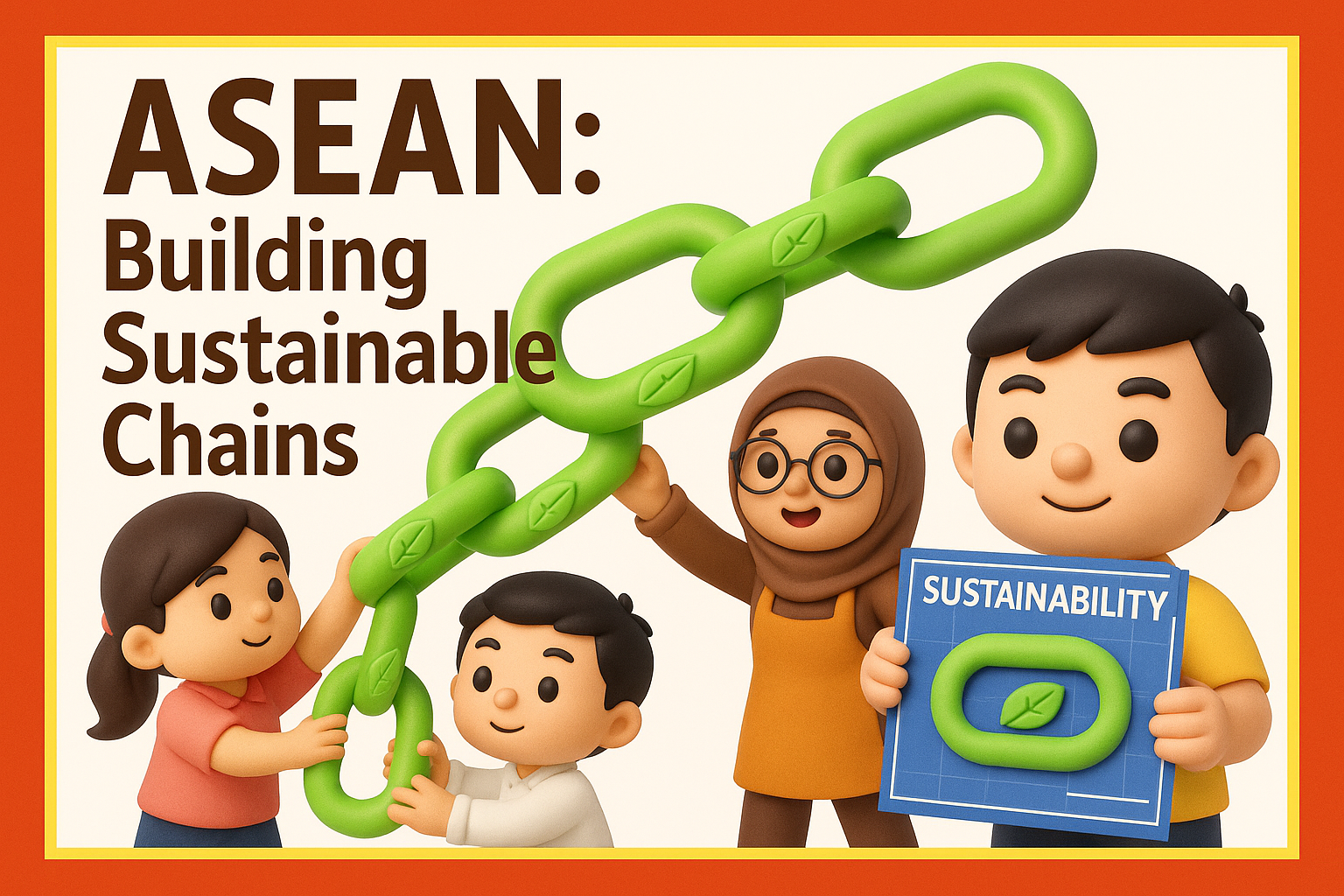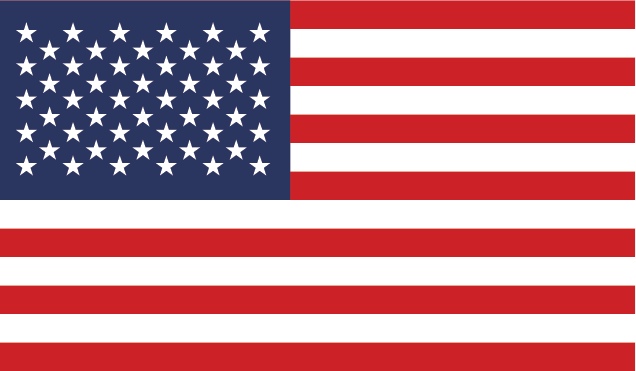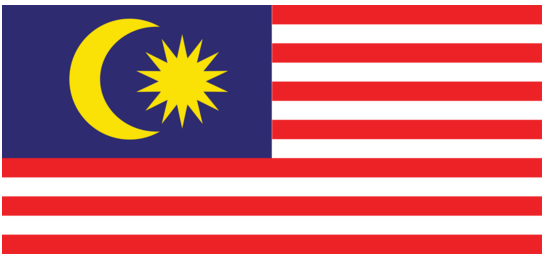
ASEAN SMEs: Building Sustainable Supply Chains Under ACFTA to Reduce US Trade War Risks
ASEAN SMEs sustainable supply chains
Current Challenges Facing ASEAN SMEs in Global Trade
Southeast Asian small and medium enterprises (SMEs) face escalating pressures in global trade, constrained by structural barriers that limit their resilience. Financial and skill gaps remain critical hurdles, with many SMEs lacking resources for technology adoption or workforce upskilling2. Export-oriented businesses in ASEAN, which account for more than 99% of the region’s enterprises, risk losing $237.5 billion in potential revenue if they fail to adopt sustainable practices—an urgent reality amid climate-driven disruptions7.
Competition from Chinese imports under agreements like ACFTA intensifies this vulnerability. Thai SMEs, for instance, report that Chinese electrical machinery, chemicals, and metal products are 20-40% cheaper than locally produced goods, threatening market share6. This "flood" of affordable imports forces domestic manufacturers to cut prices or exit niche markets, particularly in consumer goods and heavy industries6. Malaysian SMEs face similar pressures, with calls to diversify supply chains and leverage ASEAN’s "Made by Malaysia" approach to reduce reliance on costly domestic production5.
Infrastructure and regulatory complexities further stifle growth:
- Limited connectivity: Gaps in transportation, logistics, and digital infrastructure hinder trade participation2.
- Navigating trade rules: Compliance with varying customs procedures and non-tariff barriers across ASEAN creates administrative burdens2.
- Capacity mismatches: Many SMEs lack expertise in managing cross-border payroll, tax compliance, or cultural adapting to expand regionally2.
These challenges are compounded by evolving global trade dynamics, such as rising tariffs (e.g., U.S. reciprocal tariffs on Malaysia) and trade diversion risks. With ASEAN’s e-commerce platforms becoming potential conduits for tariff-evaded Chinese goods, local SMEs face heightened competition at home8.
This vulnerability underscores the urgent need for strategic reforms. Without actionable measures to address these systemic barriers, ASEAN SMEs will struggle to compete in a decarbonizing global economy, leaving critical revenue streams at risk. The path forward lies in leveraging regional mechanisms like ACFTA to build tariff-resistant supply chains, a topic explored further in the next section.
Why Sustainability is Critical to Mitigate US Trade War Risks
Sustainability isn’t just a buzzword—it’s survival for ASEAN SMEs navigating an increasingly volatile trade landscape. As the U.S. and China recalibrate their economic ties3, Southeast Asia’s small and medium enterprises face twin threats: escalating tariffs that disrupt export-dependent industries, and climate-driven disruptions that strain traditional supply chains. Yet decarbonization efforts offer a lifeline. By embedding sustainable practices into daily operations, ASEAN SMEs can strengthen resource efficiency, slash operational costs, and build buffers against external shocks. This strategic pivot isn’t optional—it’s essential for outcompeting Chinese rivals, meeting global climate standards, and securing a foothold in the $237.5 billion revenue pool at risk of being forfeited without sustainable reforms6.
Resource Efficiency as a Competitive Edge
Sustainability directly tackles one of ASEAN SMEs’ biggest pain points: cost volatility. Energy audits and circular supply chain tools—like those in the ADB (Asian Development Bank)-backed Greening Value Chain Playbook1—allow small factories to identify waste points in production, recycling materials that would otherwise become expensive byproducts. A Malaysian textile SME adopting such tools reported a 20% reduction in water usage and a 15% drop in energy costs, freeing capital for workforce training6. These gains are critical, as Chinese imports under ACFTA often undercut local prices due to economies of scale2.
Building Resilience Through Decarbonization
Climate action doubles as trade risk management. Transitioning to renewable energy reduces exposure to fossil fuel price swings, while carbon pricing models aligned with RCEP clauses1 prepare SMEs for future carbon tariffs. Case in point: Indonesian furniture makers adopting biodegradable packaging under the Green Nickel Corridor initiative now meet stricter EU sustainability standards, safeguarding their access to premium markets1. This proactive approach contrasts sharply with the reactive stance of SMEs still reliant on cheap fossil fuels, which face sudden disruptions when carbon border taxes are introduced.
Aligning with Net-Zero Targets to Strengthen Regional Competitiveness
ASEAN’s 2050 net-zero goals aren’t abstract targets—they’re economic mandates. The ASEAN Green Technology Platform1, launched in 2024, connects startups with policymakers to accelerate innovations like Cambodia’s rice-straw bioplastics and the Philippines’ marine biodegradable packaging. By collaborating on IP-sharing and standardized carbon reporting frameworks1, SMEs gain credibility in global markets while differentiating themselves from Chinese competitors.
| Implementation Challenge | ADB Intervention | SME Impact |
|---|---|---|
| High energy costs | Energy audits & circular tools | 15-20% cost reductions[1] |
| Limited green tech access | Regional R&D clusters | Accelerated adoption of bio-materials[1] |
| Disparate carbon reporting | Harmonized Green Taxonomy | Competitive bids for EU green procurement contracts[1][6] |
Malaysia’s Greening Value Chain (GVC) Programme exemplifies this strategy. Since 2023, over 330 SMEs have undergone training in emissions measurement—and nearly half now report their carbon footprints, positioning them to access low-interest loans from ADB’s (Asian Development Bank) Climate Investment Funds6. This dual focus on technical capacity and financial incentives creates a scalable blueprint for regional adoption.
Sustainability also addresses systemic vulnerabilities exposed by U.S. tariffs. For instance, Vietnamese electronics SMEs adopting sustainable production methods can qualify for exemptions under new U.S. clean tech incentives, offsetting potential tariff penalties. Similarly, Thai food processors using solar-powered cold chains reduce energy costs while gaining preferential access to sustainability-focused supermarket chains in Europe1.
The transition isn’t seamless. Structural barriers like high upfront costs for green tech and fragmented policy frameworks remain1. However, the ADB’s (Asian Development Bank) multi-pronged approach—combining technical assistance, transition financing, and knowledge-sharing—lowers barriers to entry. By 2027, this support could help 15,000+ SMEs achieve measurable decarbonization, creating a critical mass of sustainable enterprises1.
For ASEAN SMEs, sustainability isn’t about altruism—it’s about surviving the next decade. As global trade realigns around climate criteria, the region’s small businesses must choose: become sustainability pioneers or fade into irrelevance.
This focus on sustainability forms the foundation for leveraging ACFTA’s tariff advantages, a topic explored in the next section.
Leveraging ACFTA: Opportunities and Structural Barriers
The ASEAN-China Free Trade Area (ACFTA) has become a double-edged sword for regional SMEs, offering unprecedented market access while intensifying import competition. For Indonesian SMEs, this duality manifests as a constant struggle to scale operations and maintain pricing competitiveness in a landscape dominated by cheaper Chinese imports.
ACFTA’s Market Access vs. Import Competition
ACFTA’s tariff reductions—now covering 90% of traded goods with effective elimination of Chinese import duties—have turbocharged ASEAN’s integration into global value chains1. For example, Vietnam’s electronics and Malaysia’s machinery sectors now supply components to Chinese manufacturers, while Thai food processors benefit from duty-free access to China’s 1.4 billion consumers1. However, this proximity also accelerates the displacement of local industries by Chinese imports. In Indonesia, domestic textile and furniture SMEs face margins squeezed by 20–40% cheaper Chinese alternatives flooding regional markets under ACFTA’s zero-tariff provisions6.
Indonesian SMEs’ Scalability Challenges
Indonesia’s cottage industries and micro-enterprises—critical for rural employment—lack the infrastructure to compete with China’s advanced manufacturing. Limited access to rail/logistics networks forces reliance on costly domestic shipping, while fragmented tax compliance systems delay cross-border trade2. Pricing pressures are further compounded by:
- Resource inefficiencies: Small manufacturers often pay 1.5–2x more for raw materials due to reliance on local middlemen, compared to Chinese firms sourcing directly from ASEAN’s CLMV countries5.
- Regulatory complexities: Navigating sixteen distinct origin criteria across ASEAN-6 and CLMV nations stymies efforts to capitalize on ACFTA’s cumulation benefits6.
ACFTA’s Role in Building Tariff-Resistant Value Chains
To counter these headwinds, ACFTA 3.0 introduces provisions aimed at fostering regional value chain resilience while mitigating risks of U.S. trade crackdowns. Key mechanisms include:
| Mechanism | Impact on SMEs | Example |
|---|---|---|
| Stricter Origin Protocols | Prevents transshipment fraud by enforcing traceability | Vietnam’s customs reforms align with ACFTA 3.0 to block “label-switching” of Chinese exports[2] |
| Cross-Border Cumulation | Allows multinational supply chains to retain tariff benefits | Malaysian SMEs importing Thai components can still export to China duty-free under ACFTA cumulation rules[6] |
| Digital Trade Provisions | Facilitates e-commerce and data-driven logistics | Simplified e-customs procedures reduce clearance times for SMEs in Singapore and Philippines[2] |
Indonesia’s Green Value Chain Experiment
In response to pricing pressures, Indonesian SMEs are pivoting toward niche markets through sustainability-focused ACFTA partnerships. The Green Nickel Corridor initiative–a collaboration between Indonesian furniture makers, Thai bioplastics producers, and Malaysian e-commerce platforms–demonstrates how ACFTA can enable:
- Upstream Value Capture: Indonesia’s rattan and wood furnish raw materials to Thai bio-manufacturers, creating a regional supply chain immune to Chinese competition5.
- Certified Export Channels: Finished eco-friendly products gain preferential access to China’s premium markets through ACFTA’s green economy clauses2.
Yet systemic barriers persist. 69% of Indonesian SMEs report difficulties accessing ACFTA’s cumulation benefits due to bureaucratic complexity, while Malaysian SMEs struggle with origin verification paperwork for multi-stage production6. ACFTA 3.0’s upcoming supply chain connectivity clauses aim to address these gaps, but implementation will require ASEAN governments to harmonize digital documentation systems.
The path forward lies in transforming ACFTA into a tariff-resistant platform that empowers SMEs through:
- Regional Specialization: SMEs focusing on high-value, sustainability-aligned niches (e.g., organic food processing, eco-textiles) rather than cost-driven sectors.
- Cross-Border Partnerships: Collaborative supply chains spanning ASEAN-6 and CLMV nations to lower aggregated costs and meet origin criteria.
- Policy Support: Targeted training programs for SMEs to navigate ACFTA 3.0’s new digital compliance frameworks2.
By seizing these opportunities, ASEAN SMEs can convert ACFTA’s competitive pressures into catalysts for sustainable growth. The next section explores how regional ESG frameworks and greening value chain programs provide actionable tools to achieve this transition.
ASEAN's ESG Framework and GVC Programme: Strategic Tools
Harmonizing Climate Standards: The ACMF ESG Reporting Guide
ASEAN’s ASEAN Common Criteria for ESG Reporting Guide lays the foundation for region-wide decarbonization efforts, bridging the gap between fragmented national norms and global sustainability demands. Launched through partnerships with institutions like the ADB, this framework provides SMEs with actionable templates for tracking emissions, waste reduction, and renewable energy adoption1. Critical components include:
| Tool | Purpose | Example |
|---|---|---|
| Energy Audit Templates | Identifies production inefficiencies | Textile SMEs in Malaysia cut water usage by 20% using GVC audits[6] |
| Carbon Pricing Models | Aligns costs with RCEP sustainability clauses | Factories adopt shadow pricing to prepare for EU carbon border taxes[1] |
| Circular Supply Chain Tools | Reduces raw material dependency | Indonesian furniture makers adopt biodegradable packaging via Green Nickel Corridor[1] |
By standardizing metrics like Scope 3 emissions and waste diversion rates, the guide enables cross-border compliance with sustainability certifications sought by EU and North American buyers. This harmonization is crucial for smallest enterprises—97% of ASEAN’s businesses—without in-house sustainability teams5.
GVC Programme: Malaysia’s Scalable Transition Model
Malaysia’s Greening Value Chain (GVC) Programme exemplifies how technical training, transition financing, and corporate partnerships can transform SME sustainability efforts. Launched in 2023 under the Joint Committee on Climate Change, this programme combines:
- Anchor Company Partnerships: Large corporates provide infrastructure, mentorship, and green procurement opportunities. For example, an anchor firm might share its solar panel facilities with SME suppliers6.
- Technical Capacity Building:
- Blended Financing: Low-interest loans from ADB’s Climate Investment Funds ($2.5 billion annually) combined with corporate matching grants6.
Initial results show promise: half the trained SMEs now monitor their carbon footprints, while others reduce production costs by 15–20% through resource efficiency gains6. A textile firm in Penang reported 15% energy savings after adopting GVC-recommended waste-to-energy systems8.
Upcoming GVC Playbook: A SME-Centric Sustainability Roadmap
The Greening Value Chain Playbook (launched April 2025) aims to distill these strategies into practical guidance for all ASEAN nations. This playbook addresses two systemic barriers faced by SMEs:
- Technical Ambiguity: Provides tailored action plans for industries like food processing and electronics, avoiding one-size-fits-all approaches1.
- Funding Gaps: Outlines eligibility criteria for ADB’s Climate Investment Funds and corporate-backed green bonds1.
A sneak peek reveals key features:
- Sector-Specific Toolkits: Template for calculating carbon intensity per product unit
- Compliance Checklists: Step-by-step guides for aligning with RCEP’s sustainability clauses1
- Regional IP Banks: Access to innovations like Cambodia’s rice-straw bioplastics1
This resource co-locates with the ASEAN Green Technology Platform, established in 2024 to connect startups with policymakers. Together, they form a “survival kit” for SMEs navigating climate tariffs and US-China trade decoupling3.
Case Studies: Malaysia’s GVC Programme and Indonesia’s ACFTA Experience
Malaysia’s GVC Programme: Structured Transition Through Collaboration
Malaysia’s Greening Value Chain (GVC) Programme offers a blueprint for systemic SME decarbonization, blending technical capacity, corporate partnerships, and competitive financing. Launched in 2023 under the Joint Committee on Climate Change, the initiative has trained over 330 SMEs in emissions measurement, with nearly half now actively reporting their carbon footprints4. This reflects a deliberate strategy to move beyond compliance-based sustainability toward actionable change.
What makes Malaysia’s approach unique?
- Anchor Company Partnerships: Major corporates provide infrastructure, mentorship, and green procurement opportunities. For example, anchor firms share solar facilities with SME suppliers, reducing energy costs while fostering low-carbon supply chains1.
- Blended Financing: Low-interest loans from institutions like the Asian Development Bank (ADB) are paired with corporate grants, lowering barriers to green tech adoption. A Penang-based textile SME reportedly cut energy costs by 15% after adopting GVC-recommended waste-to-energy systems8.
- Sector-Specific Support: Workshops focus on identifying “carbon hotspots,” such as inefficient machinery or wasted resources. This granular approach helps SMEs prioritize high-impact changes without overhauling operations5.
The GVC’s success lies in its whole-of-ecosystem design. Large corporations act as “transition enablers,” while policymakers ensure continuity through JC3’s climate policies. This creates a feedback loop where SMEs share lessons learned, reinforcing the program’s scalability1.
Indonesia’s ACFTA Experience: Navigating Competitiveness and Sustainability
Indonesia’s experience under the ASEAN-China Free Trade Area (ACFTA) highlights both the opportunities and pitfalls of regional integration. While ACFTA has boosted bilateral trade to $36.1 billion (up from $3.8 billion in 2003)6, domestic SMEs face entrenched challenges:
| SME Challenge | ACFTA Impact | Sustainability Response |
|---|---|---|
| Cheap Chinese Imports | Textile/furniture margins squeezed by 20–40% | Pivoting to niche markets (e.g., rattan eco-furniture)[5] |
| Supply Chain Costs | High logistics fees due to fragmented infrastructure | Exploring cross-border cumulation under ACFTA 3.0[7] |
| Regulatory Complexity | Difficulty meeting “origin criteria” for tariff benefits | Green Nickel Corridor: Regional partnerships for certified exports[2] |
The Green Nickel Corridor exemplifies Indonesia’s strategy to leverage ACFTA as a sustainability platform. Partnering with Thai bioplastics manufacturers and Malaysian e-commerce platforms, Indonesian furniture makers source biodegradable materials locally and export finished goods through ACFTA’s green economy clauses. This model avoids price wars with Chinese suppliers while tapping into premium markets5.
Contrasting Approaches: Top-Down vs. Reactive Strategies
Malaysia and Indonesia represent diverging paths in greening value chains:
-
Malaysia’s Proactive Model
- Centralized Coordination: JC3 aligns policies, anchor companies, and financial institutions to create a unified transition roadmap1.
- Measurable Outcomes: Training modules track emissions reductions (e.g., a 20% drop in water usage by textile SMEs)6.
- Risk Mitigation: SMEs adopting GVC tools gain resilience against carbon tariffs while improving operational efficiency4.
-
Indonesia’s Fragmented Response
- Niche Driven: Success stories rely on voluntary partnerships (e.g., Green Nickel Corridor) rather than national mandates5.
- Competitiveness Trade-offs: Focus on premium markets (e.g., EU-certified eco-products) while dominantly losing ground to Chinese imports in price-sensitive sectors6.
- Regulatory Hurdles: Only 31% of SMEs access ACFTA’s cumulation benefits due to bureaucratic delays6.
Critical Lessons
- Collaboration Drives Scale: Malaysia’s anchor company model reduces isolation, enabling shared risk and resource pooling1.
- Sustainability as a Shield: Indonesia’s niche strategies protect against tariff risks but require stronger policy frameworks to address systemic gaps6.
Moving Forward
These case studies underscore the need for a regional strategy that balances Malaysia’s structured governance with Indonesia’s innovation-driven adaptability. The upcoming GVC Playbook—drawing lessons from both countries—could harmonize these approaches, offering ASEAN SMEs a unified path to tariff-resistant, climate-aligned supply chains.
Building Tariff-Resistant Supply Chains: Regional Strategies
ASEAN’s future hinges on designing supply chains that resist tariff shocks while embracing sustainability. With U.S. trade policies growing unpredictable6, the region is accelerating strategies to reduce over-dependence on Western markets. The core approach? Diversify, collaborate, and digitize—a three-pronged strategy embedded in ASEAN’s 2025 trade resilience plans7.
Diversifying Supply Chains: Niche Sustainability Markets
Instead of competing directly with China’s cost-driven exports, ASEAN SMEs are pivoting to high-value sustainability niches. This shift transforms vulnerability into opportunity:
- Eco-certified products: Indonesian furniture makers now produce rattan chairs using marine biodegradable packaging (a Philippine innovation) to meet EU green procurement standards1. ACFTA 3.0’s green economy clauses enable these products to access China’s premium markets duty-free2.
- Circular supply chains: Malaysia’s Semiconductor Sustainability Hub uses automated tools to recycle e-waste into rare minerals, reducing raw material imports by 30%1. This model avoids tariff-dependent raw material sourcing.
- Regional specialization: Cambodia’s rice-straw bioplastics and Thai solar-powered cold chains illustrate how SMEs can capture market share in resource-light sectors while complying with RCEP sustainability clauses1.
| Strategy | Impact | Example |
|---|---|---|
| Niche markets | Avoid price wars with China | Indonesia’s eco-furniture exports to EU[5] |
| Circular systems | Cut input costs | Malaysia’s e-waste recycling hubs[1] |
| Regional R&D | Speed tech adoption | ASEAN Green Tech Platform IP-sharing[1][5] |
These diversification efforts align with the ADB’s Greening Value Chain Playbook, which provides SMEs with sector-specific toolkits to measure carbon footprints and design circular workflows1.
Cross-Border Partnerships: Collaborative Resilience
Solo survival isn’t an option in ASEAN’s fragmented SME landscape. ูมเวเซส.cross-border partnerships are becoming the norm:
- Production clusters: Malaysian electronics SMEs partner with Thai component suppliers and Vietnamese assembly plants to meet ACFTA 3.0’s cumulative origin criteria2. This spreads tariff benefits across borders while lowering aggregated costs.
- Sustainability alliances: Indonesia’s Green Nickel Corridor connects local furniture makers with Thai bioplastic producers and Malaysian e-commerce platforms, creating regionally certified export channels5.
- MSME networks: The ASEAN Green Technology Platform facilitates joint R&D projects, such as developing Cambodian rice-straw biodegradable textiles with Filipino designers1.
Why this works: These partnerships leverage ASEAN’s strengths in raw materials (Indonesia’s nickel), technology (Malaysia’s semiconductor know-how), and labor (Vietnam’s manufacturing skills). By pooling resources, SMEs build tariff-resistant ecosystems that external competitors find hard to penetrate.
Digital Integration: Seamless Compliance and Traceability
Technology is the backbone of modern trade resilience. ASEAN is prioritizing digital tools to:
- Automate customs compliance: Blockchain platforms like the ADB’s https://www.adb.org/ ASEAN Green Technology Platform track supply chain origins in real-time, preventing US tariff evasion through “label-switching” of Chinese exports2.
- Streamline logistics: Indonesia’s logistics optimization programs use IoT sensors to reduce shipping costs for SMEs reliant on fragmented infrastructure2.
- Simplify compliance: The ACMF ESG Reporting Guide provides digital templates for SMEs to track emissions, waste, and renewable energy use—critical for accessing EU and US sustainability-linked procurement contracts1.
Case study: Thailand’s digital customs reforms
To combat tariff circumvention, Thailand implemented automated systems that cross-reference export invoices with production records. This aligns with ACFTA 3.0’s stricter origin protocols, ensuring authentic “Made in ASEAN” goods qualify for tariff exemptions2.
ADB’s Three-Pillar Support System
The Asian Development Bank anchors ASEAN’s transition through:
- Technical assistance:
- Energy audits tailored to small manufacturers
- Carbon pricing models aligned with RCEP clauses1
- Transition financing:
- Regional knowledge sharing:
This tripartite approach addresses ASEAN’s key implementation barriers, such as high adaptation costs for SMEs and fragmented green tech access1. By 2027, the Asian Development Bank estimates this support could enable 15,000+ SMEs to measurably decarbonize, creating a critical mass of sustainable enterprises1.
As ASEAN SMEs embrace these strategies, the focus shifts to institutionalizing sustainability at the policy level. The next section outlines actionable recommendations for governments to drive this transformation.
## The Future of Sustainable Supply Chains: Policy Recommendations
To build tariff-resistant supply chains, ASEAN must adopt a bold, three-pronged strategy centered on **targeted financing**, **capacity building**, and **harmonized policies**. These measures address the systemic barriers outlined earlier while positioning the region as a leader in sustainable trade.
**Key recommendations for policymakers:**
1. **Expand targeted financing mechanisms**
- **Low-carbon transition funds**: Allocate at least 5% of [ADB](https://www.adb.org/)'s $2.5 billion annual climate investment to SME-specific grants and green bonds, mirroring Malaysia’s blended financing model[1][5].
- **Green procurement incentives**: Link corporate tax breaks to adoption of ASEAN-certified sustainable materials, encouraging anchor firms to partner with SMEs[1][6].
2. **Accelerate sector-specific training**
- **Technical workshops**: Roll out [ADB](https://www.adb.org/)'s Greening Value Chain Playbook tools (energy audits, circular supply chain templates) across all 10 member states[1].
- **Digital upskilling**: Scale programs like ASEAN SOAR Together, which teaches [TikTok Shop](https://ads.tiktok.com/i18n/official/article?aid=1749532790503170) live selling and compliance strategies to 97% of MSMEs[6][8].
- **Cross-border R&D access**: Use the ASEAN Green Technology Platform to share innovations like Cambodia’s rice-straw bioplastics with SMEs in need[1][5].
3. **Harmonize regional policies**
- **Unified carbon reporting standards**: Adopt the [ADB](https://www.adb.org/)-backed Green Taxonomy to simplify compliance with EU and RCEP sustainability clauses[1].
- **Streamlined ACFTA 3.0 protocols**: Mandate digital origin certification systems to prevent tariff circumvention and ensure SMEs access cumulation benefits[2][5].
**Implementation challenges and solutions**
| **Barrier** | **ADB/Policymaker Intervention** | **SME Impact** |
|---------------------|----------------------------------------|-------------------------------|
| High green tech costs | Low-interest loans + anchor partnerships | 15,000+ SMEs decarbonizing by 2027[1] |
| Differing national capacities | National Green Taxonomy Frameworks | Standardized carbon reporting[1] |
| Cross-border tech gaps | Regional R&D clusters + IP banks | Accelerated adoption of bio-materials[1][5] |
These steps require ASEAN to move beyond reactive measures. By aligning tariff-resistant strategies with sustainability targets, policymakers can transform U.S. trade risks into catalysts for long-term economic resilience.
*As ASEAN leaders finalize their 2025 trade strategies, the focus must shift from survival to leadership. By prioritizing these policies, the region can emerge as a sustainable supply chain hub – not just a China-dependent manufacturing corridor.*
The path to tariff-resistant supply chains isn’t mysterious – it’s achievable through coordinated action. From Indonesia’s niche green exports to Malaysia’s structured GVC Programme, ASEAN has proven examples of what works. Policymakers must now scale these successes across borders, ensuring no MSME is left behind. With U.S. tariffs looming and global sustainability standards tightening, ASEAN’s future hinges on turning today’s recommendations into tomorrow’s reality.
Transforming ASEAN Supply Chains: How PONGO Elevates Your Business
Extend Your Reach with PONGO Live Streaming Solutions
In the dynamic landscape of ASEAN's sustainable supply chains, PONGO TECH stands out by integrating advanced live streaming solutions. This not only complements the sustainable practices discussed but also offers a novel approach to engage more deeply with international markets. Our services allow businesses to interact with a global audience in real-time, ensuring your brand message resonates effectively.
Why Partner with PONGO: Unparalleled Expertise in ASEAN Markets
PONGO has established itself as a leading force in digital marketing across Southeast Asia, leveraging local insights and influencer networks to provide targeted and effective marketing strategies. With PONGO, you're partnering with a company recognized for its data-driven approaches and successful case studies, including collaborations with industry-leading brands like JDID and TCL .
Driving Sustainable Success: PONGO's Tailored Solutions for Your Business
Addressing the same challenges highlighted in building sustainable supply chains, PONGO's solutions are tailored to enhance resource efficiency and reduce operational costs through innovative digital strategies. Our expertise in blending interactive content with ecommerce needs means we can significantly enhance your market positioning and resilience against disruptions .
Take the Leap: Connect with PONGO Today
Ready to make your mark in the ASEAN region? Let PONGO TECH guide your journey with targeted solutions that redefine success in digital marketing. Visit our contact page to learn how we can help your business thrive in competitive global markets: Contact PONGO.
 English
English 



